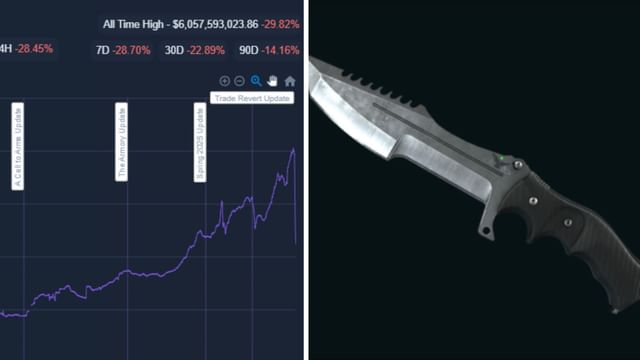The Hookup Doctor's Guide
Navigating the world of modern dating and relationships.
When Dust Settles: The Curious Case of the CS2 Market Cap Crash
Uncover the shocking reasons behind the CS2 market cap crash and what it means for gamers and investors alike. Don't miss these insights!
Understanding the CS2 Market Cap Collapse: Key Factors and Future Implications
The CS2 market cap collapse has sent shockwaves throughout the gaming and cryptocurrency communities, raising critical questions about the sustainability and future of related markets. Several key factors contributed to this decline, including regulatory scrutiny, sudden shifts in player sentiment, and unprecedented competition from new gaming platforms. As investors and developers alike grapple with this downturn, understanding the underlying reasons is vital to navigating the complexities of the market. An analysis of transaction volumes, player engagement metrics, and regulatory developments reveals a comprehensive picture of the challenges faced by CS2.
Looking ahead, the implications of the CS2 market cap collapse are significant. First, it raises concerns about the viability of future investments in similar gaming projects, which may deter potential stakeholders. Furthermore, industry experts suggest that this collapse could lead to more rigorous regulations aimed at enhancing market stability. In this context, adapting to market changes and focusing on innovation will be crucial for developers and investors alike. The future of CS2, while uncertain, could recover stronger if stakeholders learn from this downturn and prioritize sustainable growth.

Counter-Strike is a highly popular first-person shooter series that has captivated gamers around the world. The competitive nature of the game has led to many players focusing on strategies and skill development. Recently, discussions around the market cap crash cs2 have sparked interest among the community regarding the financial implications of the game.
Is the CS2 Market Cap Crash a Temporary Setback or a Sign of Deeper Issues?
The recent CS2 market cap crash has raised eyebrows across the gaming community and investment circles alike. Many are asking whether this downturn is merely a temporary setback or indicative of deeper systemic issues. On one hand, the rapid fluctuations in market capitalization could be attributed to typical market volatility, especially in the gaming sector where trends can change overnight. However, underlying factors such as declining player engagement, shifts in consumer preferences, and increased competition may be at play, suggesting that the market's decline could be more profound and lasting.
Investors should closely monitor several key indicators to determine the sustainability of the CS2 market cap. For instance, a continued decrease in active player counts could signal a longer-term issue, prompting potential investors to reevaluate their strategies. Additionally, if game developers fail to consistently deliver engaging content and updates, the fallout could deepen, leading to even further declines in market value. In this context, stakeholders must remain vigilant, as the implications of the current situation could affect not only CS2 but also the broader gaming ecosystem.
What Players and Investors Need to Know About the CS2 Market Cap Decline
The recent decline in the CS2 market cap has raised concerns among both players and investors, prompting a closer examination of the factors contributing to this downturn. One of the primary reasons is the increased competition in the gaming industry, with numerous new titles emerging that capture the attention of the youthful gaming demographic. Furthermore, shifts in player engagement, such as declining player counts and decreased in-game purchases, indicate a potential shift in the gaming landscape that could affect investment strategies.
Investors must consider several key factors when assessing the CS2 market cap decline:
- Market Trends: Analyzing current market trends and player preferences can provide insight into potential recovery or continued decline.
- Community Feedback: Engaging with the player community can yield valuable feedback on the game's performance and future improvements.
- Long-term Potential: Assessing the game's long-term potential against its current market performance will be critical for making informed investment decisions.